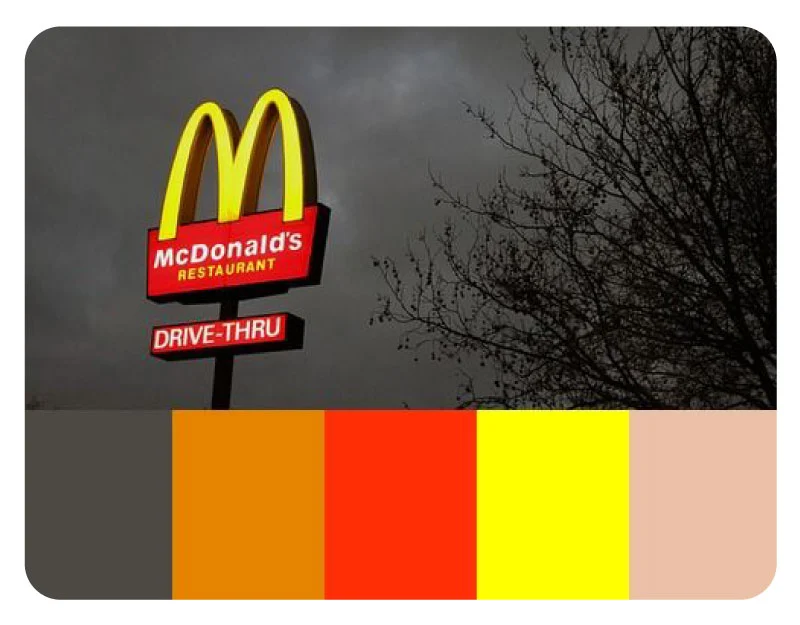Color is a powerful tool in branding, as it can evoke emotions, communicate values, and differentiate your brand from competitors. Choosing the right colors for your brand is essential to creating a strong and memorable identity that resonates with your target audience.

In this article, we will explore the best colors for branding and how they can impact your brand’s success. Whether you’re launching a new brand or looking to revamp your existing one, understanding the psychology behind color choices and their impact on consumer behavior can help you make informed decisions that will set your brand apart. So, let’s dive into the world of color and discover the best colors for branding!
Understanding Color Psychology in Branding
Color psychology is the study of how colors affect our emotions, moods, and behavior. In branding, the colors you choose can have a significant impact on how consumers perceive and interact with your brand.
For instance, warm colors like red, orange, and yellow are often associated with excitement, energy, and passion. These colors are often used in branding for sports, food, and entertainment industries to evoke excitement and enthusiasm.
On the other hand, cool colors like blue, green, and purple are associated with calmness, stability, and trust. These colors are often used in branding for healthcare, finance, and technology industries to convey a sense of reliability and trustworthiness.

Additionally, different shades and tones of colors can also have varying psychological effects. For example, a light shade of blue can evoke a sense of serenity, while a dark shade of blue can create a sense of authority and professionalism.
Understanding the meanings and associations of different colors can help you make informed decisions about the colors you choose for your brand. By selecting colors that align with your brand’s values and personality, you can create a cohesive and effective brand identity that resonates with your target audience.
Choosing Your Brand Colors
Choosing the best colors for marketing is a crucial step in creating a successful brand. When selecting colors, there are several factors to consider, such as your target audience, industry, and brand personality.
One factor to consider is your target audience. Different age groups, genders, and cultural backgrounds may have varying preferences and associations with certain colors. For instance, pink is often associated with femininity in Western cultures, while it is associated with masculinity in Japan.
Another factor to consider is your industry. Certain colors are commonly used in specific industries to convey certain messages. For example, the color green is often used in the healthcare industry to represent growth, renewal, and healing.

Your brand’s personality is also an important factor to consider when selecting colors. Are you aiming for a playful and energetic brand or a more professional and serious one? Colors can help communicate your brand’s personality and values to your target audience.
When choosing colors, it’s also important to consider color schemes and combinations. Complementary colors, such as red and green or blue and orange, can create a strong visual impact, while monochromatic color schemes, such as different shades of blue, can create a more subtle and sophisticated look.
Ultimately, the best colors for marketing are those that align with your brand’s values and resonate with your target audience. By considering these factors and experimenting with different color combinations, you can create a unique and effective brand identity that stands out in your industry.
Best Colors for Branding
When it comes to the best colors for branding, there are several options to consider. However, there are a few colors that are particularly effective at communicating certain brand messages and evoking specific emotions in consumers.
One of the most popular colors for branding is blue. Blue is often associated with trust, reliability, and professionalism. It is commonly used in branding for healthcare, finance, and technology industries. Some popular brands that use blue in their branding include Facebook, IBM, and Dell.
Another popular color for branding is red. Red is associated with excitement, passion, and energy. It is commonly used in branding for food, sports, and entertainment industries. Some popular brands that use red in their branding include Coca-Cola, Netflix, and Red Bull.
Green is another effective color for branding, as it is often associated with growth, renewal, and environmentalism. It is commonly used in branding for organic and sustainable products, as well as the healthcare industry. Some popular brands that use green in their branding include Whole Foods, Starbucks, and John Deere.
Yellow is a bright and cheerful color that is often associated with optimism and creativity. It is commonly used in branding for children’s products, as well as the food and beverage industry. Some popular brands that use yellow in their branding include McDonald’s, Cheerios, and Best Buy.
When choosing the best colors for your brand, it’s important to consider your industry, target audience, and brand personality. By selecting colors that align with these factors, you can create a strong and effective brand identity that resonates with your target audience and sets your brand apart from competitors.
How to Implement Your Brand Colors
Implementing your brand colors across all marketing channels is a crucial step in creating a strong and cohesive brand identity. Here are some tips to help you effectively implement your brand colors:
- Create a color style guide: A color style guide is a document that outlines your brand’s color palette, along with guidelines for how to use those colors in different contexts. This includes things like color codes, recommended color combinations, and examples of how to use colors in different marketing materials.
- Use consistent colors across all materials: Consistency is key when it comes to implementing your brand colors. Make sure you use the same colors across all marketing materials, including your website, social media profiles, advertising, and packaging.
- Consider color psychology: Remember that colors can have different meanings and associations, so choose colors that align with your brand’s personality and values. For example, if your brand is focused on sustainability and the environment, green may be a good choice.
- Use color to enhance your brand’s message: Color can be a powerful tool for communicating your brand’s message and values. For example, if your brand is all about innovation and creativity, consider using bold and vibrant colors to convey that message.
- Test and optimize: Finally, remember that implementing your brand colors is an ongoing process. Continuously test and optimize your color choices to see what resonates best with your audience and drives the most engagement and conversions.

By following these tips, you can effectively implement your brand colors and create a strong and cohesive brand identity that resonates with your target audience.
Conclusion
In conclusion, selecting the best colors for branding is a critical aspect of creating a strong and effective brand identity. Understanding color psychology and considering factors such as industry, target audience, and brand personality can help guide your color choices. Blue, red, green, and yellow are just a few examples of colors that can effectively communicate different brand messages and evoke specific emotions in consumers. By implementing your brand colors consistently across all marketing channels and testing and optimizing your choices, you can create a cohesive and impactful brand identity that resonates with your target audience and sets your brand apart from competitors.
FAQs
What role do colors play in branding?
Colors play a crucial role in branding as they can evoke specific emotions and perceptions in consumers, communicate brand personality and values, and differentiate a brand from its competitors.
How do you choose the best colors for your brand?
When choosing the best colors for your brand, consider factors such as industry, target audience, brand personality, and color psychology. Create a color palette that aligns with your brand’s values and resonates with your target audience.
What do different colors represent in branding?
Different colors can represent different meanings and associations in branding. For example, blue is often associated with trust and reliability, while red can represent energy and excitement. It’s important to choose colors that align with your brand’s message and personality.
Can you change your brand colors after establishing them?
Yes, you can change your brand colors after establishing them. However, it’s important to consider the potential impact on brand recognition and loyalty, and to make the transition gradually to avoid confusing or alienating your audience.







 Facebook Ads Spy Tool
Facebook Ads Spy Tool TikTok Ads Spy Tool
TikTok Ads Spy Tool